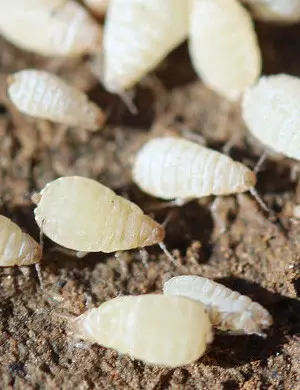
Your Guide To Root Aphids & Cannabis – Prevention & Treatment
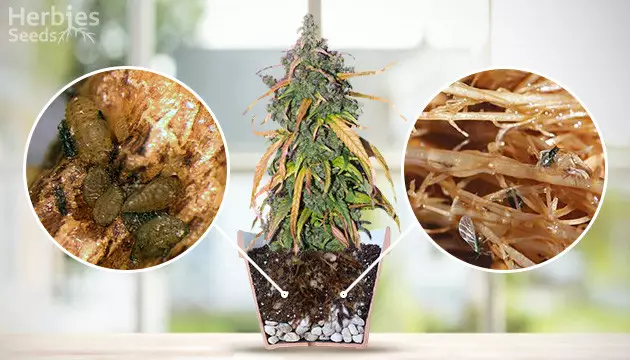
As more and more growers enter the growing game, the more recognizable root aphids have become. While spider mites used to be the nemesis of all cannabis pests, overtime growers learned to implement prevention measures to avoid their infestations. As for root aphids, this pest is a part of the phylloxera bug family, which originated in the southeastern region of the United States. For those who haven’t heard of root aphids before, that’s a good thing because like any pest, this is one you’re going to want to avoid. That’s because the root aphid can be hard to identify, and if you don’t catch its presence quickly enough, the results can be devastating. So, let’s make sure you fine-tune your root aphid identification skills, learn how to get rid of root aphids, and prevent them from ever returning.
What Are Root Aphids?
Root aphids are a common agriculture pest that has been around for centuries. In fact, they were responsible for the once great ‘French wine blight’, when they destroyed most of France’s vineyards crops before any actions could be taken.
What makes root aphid cannabis treatment so difficult is the pest’s unique cycles of life. Basically, they can mature to adult age within 15-20 days, and females have the ability to reproduce without the presence of a male. One female can lay anywhere from 100-150 eggs as the root aphids travel from root to root. This means that 5-10 generations of root aphids can be living at one time, with new eggs about to hatch at any moment. Thus, you can see how root aphids can spread and strengthen so quickly.
How To Identify Root Aphids
Obviously, when you notice signs of malnourished plants, you should check a few things first like pH levels, nutrient levels, watering schedules, etc. If all of these appear normal, you’ll want to dig a little deeper. Root aphid identification begins with, of course, the roots. If your roots are yellow or appear swollen, it’s a good sign that you should start looking for root aphids. However, that’s not an easy task. Because root aphids change forms, they’re harder to identify and are often confused with fungus gnats. Since they can grow wings, this only adds to the confusion! To decipher the difference, root aphids are shorter and wider than fungus gnats, approximately 1mm in length, and shaped like a pear.


Root aphid identification in cannabis only gets harder because of the fact that these pests can camouflage themselves to match the color of the roots they’re feeding off. Typically, root aphid cannabis varieties range in color from white to brown. However, if you can’t identify root aphids with the naked eye or catch them quickly enough with yellow sticky tape, we’ll cover how root aphids symptoms appear in your plants next so that you know what action to take.
How Do Root Aphids Affect Cannabis Plants?
At first glance, root aphid symptoms appear like a nutrient deficiency, but one that comes on way too quickly. You’ll notice sudden and extreme wilting from what seemed like perfectly healthy plants. Without a swift investigation or treatment, plants may completely collapse from the stress that root aphids cause to the root base.
Leaves will begin to yellow and, although they’re still growing, you’ll notice leaf development is stunted or occurs at a slower rate. The yellowing is often mistaken for magnesium or iron deficiency, which isn’t technically wrong. Even if you checked your nutrient schedule, cannabis plants infested with root aphids get quickly nutrient-deprived because root aphids are feeding off the nutrients you’re supplying.
A musty smell is also a common proven symptom in root aphid identification, as this is a sign of bad pathogens overtaking the plant’s system.
Now that you know the ways to identify root aphids and how they’ll show their effects on your plants, it’s time to get to treatment. We’ll cover the ways of killing root aphids effectively next.
Treating Root Aphids For Cannabis
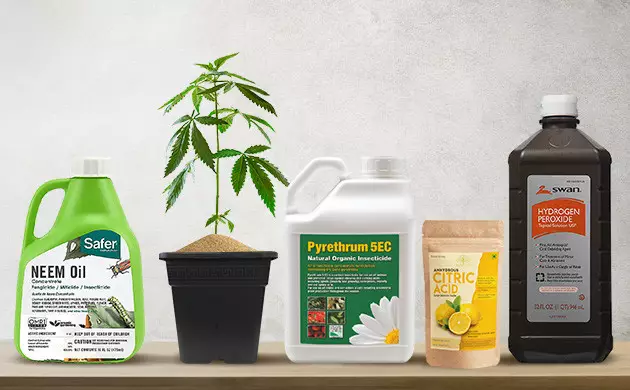
So, how to get rid of root aphids, you may ask? Due to root aphids’ rampant lifecycles, treating the problem is an uphill battle. If you’ve caught the infestation in time, there are a number of methods you can implement to fight against the growth of root aphids. However, keep in mind that without taking quick action and using multiple measures, you may have to harvest early or even destroy your crop and start fresh. Before you do so, here are the top techniques for treating root aphids in cannabis.
Neem Oil
Neem oil can be poured directly onto dry soil in the form of a solution: 2 tablespoons per 1 gallon (3.7 liters) of water. The mixture can be helpful in stopping the growing infestation by stripping the outer layer of wax from the exoskeleton of root aphids. However, it won’t kill root aphid eggs, so you’ll want to repeat the application every 7-10 days.
Hydrogen Peroxide
Proceed with caution when treating root aphid-infested cannabis plants with hydrogen peroxide, as this can harm the roots at high levels. On the flip side, it can be effective at killing root aphid larvae. Let the soil dry out for a few days and then mix 4 parts water with 1 part hydrogen peroxide. Soak your plants, and you’ll see your medium foam as it kills root aphids larvae.
Pyrethrum
Pyrethrum, the chrysanthemum-based botanical, soaks into the soil to attack and slowly eradicate root aphids. Organic pyrethrum foliar sprays are most effective when a root aphid cannabis infestation is caught early. Due to its organic nature, however, you can safely re-apply it over time to make sure the aphids are truly gone.
Citric Acid
Citric acid and citric acid-based solutions can be a safe non-toxic and organic option in fighting root aphids. They work best when used to drench the roots.
Clean Sand
New and clean sand acts as a sharp barrier to root aphid cannabis infestations going deeper into the soil and root system of your plant. Simply place it on the top and/or bottom of your pots as a preventive measure to protect against root aphids.
Green Lacewing
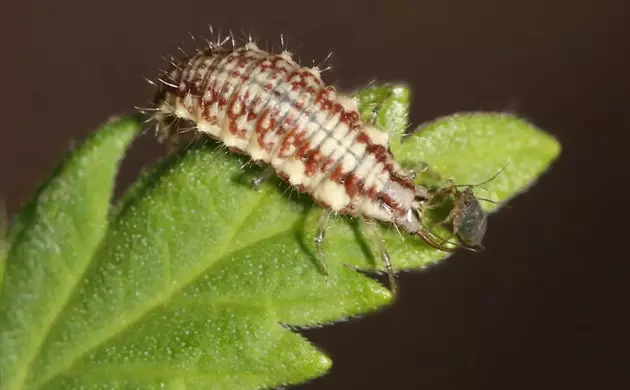
A predatory mite technically known as chrysoperla rufilabris, green lacewings feed on nectar and pollen. Their larvae are known as aphid lions, since they also feed off aphids (in addition to other mites and whiteflies). Introduce them to your garden to effectively fight root aphids.
Predatory Midge
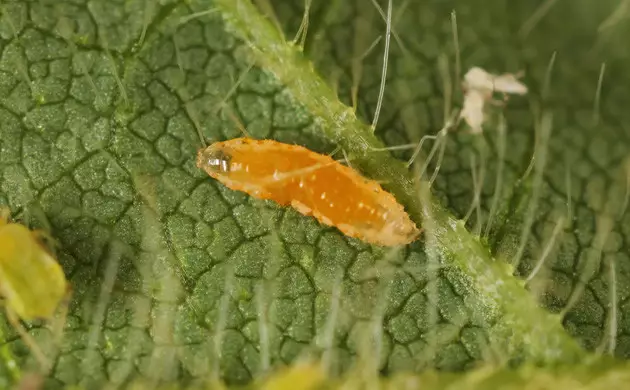
Predatory midges, AKA aphidoletes aphidimyza, are nocturnal pests that feed on over 60 species of aphids. They kill root aphids by injecting a paralyzing toxin and completely sucking out all body fluids. Their eggs can be bought in plant shops or online.
Ladybugs
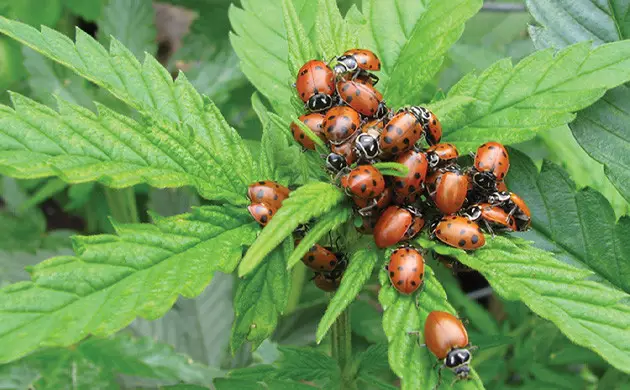
As innocent as they sound, ladybugs are also an effective predatory insect for root aphid cannabis treatment. They eat root aphids that are found on the plant. Some say they have the ability to mine the root aphids beneath the soil, as well!
Nematodes
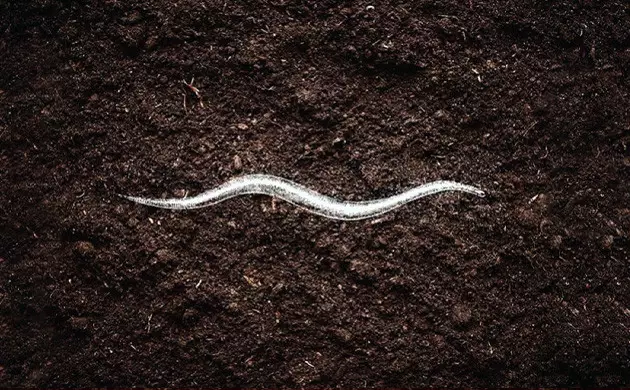
Nematodes are beneficial predatory pests that have the ability to kill root aphids by entering the soil and eating them where they affect the most. They’re effective at eradicating a number of soil-borne pests – just make sure your soil is wet at the time of release.
Store-Bought Solutions
While the other methods we’ve listed are organic and mostly safe, if the damage has already been done and you need to kill root aphids instantly, you might want to resort to chemical-based solutions. While these are not as safe for your plant, it might still be better than letting the dangerous pests take over completely. The modern market offers lots of solutions, with one of the most effective being Pyrethrin.
How Do I Prevent Root Aphids From Returning?
Once you’ve dealt with root aphids once, you won’t want to endure the ordeal again. That’s why root aphid prevention is just as key as root aphids cannabis treatment. With a few preventative measures, you should be able to ward off root aphids from infesting a second time.
Don't Overwater
Overwatering your cannabis plants creates an environment that root aphids thrive on. Make sure you’re not over-saturating your plants so the soil isn’t overly moist for extended periods of time. Switching your feeding to the morning can help, as the sun or lights will dry out the soil throughout the day. Also, be sure to have a proper drainage system in place so you can avoid standing water.
Keep The Area Clean
Cleanliness really is next to godliness when it comes to combatting pests, molds and mildews, especially root aphids. After an infestation, it’s imperative you deep-clean and sanitize every inch of your growing space and all of your tools. Root aphids can go dormant in winter months, so without proper cleaning, they can pop up again after months of absence.
Switch Up Insecticides
Using insecticides as a part of an IPM (integrated pest management) for your operation is recommended to ward off common pests. However, it’s best to switch these up and rotate varied types so the root aphids or other pests just don’t build a resistance against the solutions.
Avoid Root Aphids, The #1 Cannabis Nemesis
Coming across unhealthy plants in your crop is never ideal, but finding out that you have a root aphid cannabis infestation is one of the worst-case scenarios to uncover. Luckily, with this article, you’ve gained the knowledge to not only treat root aphids if they do come along but implement preventative measures to avoid them altogether.
Herbies Head Shop expressly refuses to support the use, production, or supply of illegal substances. For more details read our Legal Disclaimer.
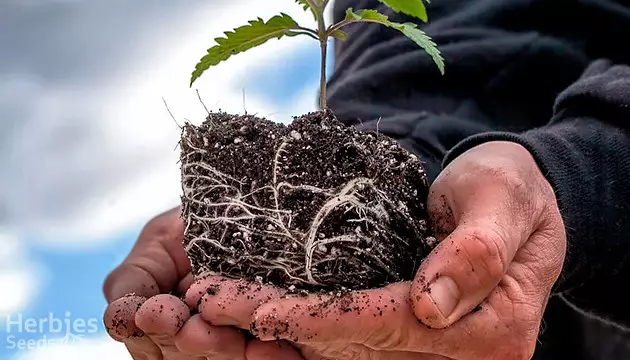
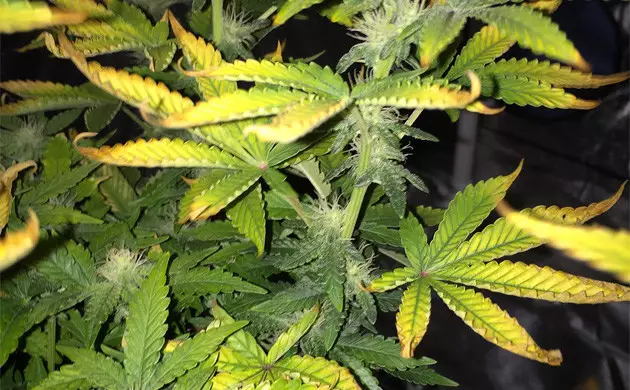
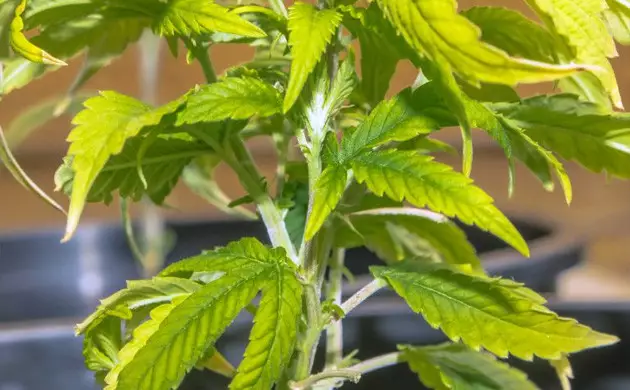
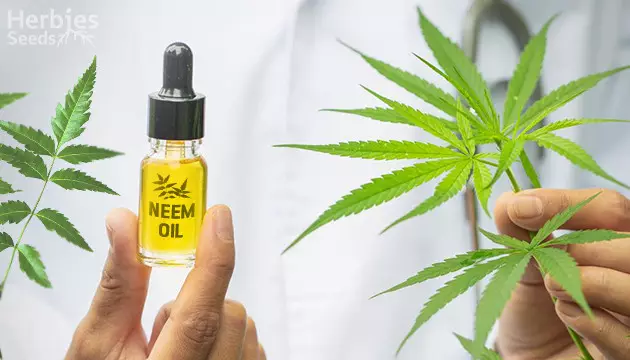






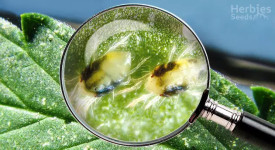
Thank you for leaving a comment for us!
Your feedback will be posted shortly after our moderator checks it.
Please note that we don’t publish reviews that: